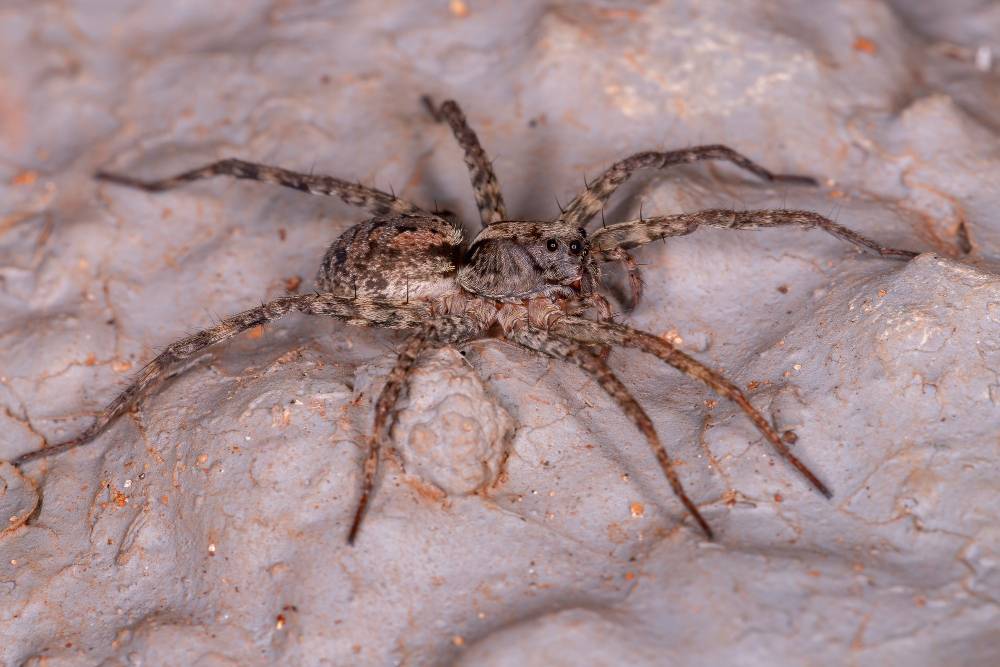Menu

It's a common myth that spiders flock to your house in the fall to escape the coming cold of winter. But that is just that, a myth. Spiders don’t infest your house more in the winter.
Spiders that you see running around your house during winter season have likely been living with you all year-round. Less than 3% of the spiders you see inside your home have set one of their eight feet outside What are House Spiders? There are many types of spiders that are considered house spiders. House spiders and cellar spiders are commonly found in homes, while jumping spiders, hobo spiders, wolf spiders and others are more occasional invaders. These spiders can be separated into two categories: Hunting spiders Web-building spiders If these house spiders don’t migrate indoors seeking warmth, how did they get inside your house in the first place? Most likely, they were born there. A female spider will place her egg sac in an undisturbed area of your home. Once hatched, spiderlings seek out secluded lairs in crawl spaces, storage areas, wall and floor voids and behind furniture and appliances. You may find some house spiders in late summer and early fall that have migrated into your home by ballooning, flying thru the air, but they are not outdoor migrants looking for a place to stay warm during the winter. Most spiders' breeding seasons are with the transition from summer to fall. If you find more spiders than usual around your home during these months, chances are they're mature males looking far and wide for a mate. While they can be a nuisance, these spiders are largely beneficial creatures. Very few house spiders are harmful to humans, and they only consume other arthropods. Outdoor Spiders in the Winter What happens to all those outdoor spiders in the winter? If most of them don’t seek shelter inside our homes, how do they survive the frigid winter months? Spiders are considered cold-blooded creatures since they don’t have the ability to regulate body temperature. When it's cold, species go through a process of cold-hardening to survive the winter. Most outdoor spiders seek shelter in piles of rocks, leaves or wood. Outdoor spiders enter a slowdown state called diapause. In this stage, spiders are not completely inactive. Instead, they will emerge on warmer days to hunt and feed on any insect prey that may be active during this time. The dangerous exception: The Dessert Recluse Spider
However, as cold weather comes in, this one outdoor spider may seek warmth and food in your home. That’s the Dessert Recluse Spider. As the name suggests the Dessert Recluse spider is shy and drawn to clutter and dark, under-used areas in your home and yard. That means that they are often found in locations where humans do not frequent. They can be found in stored items such as shoes, clothing, bedding and decorations. The most distinctive feature of all recluse spiders is the violin-shaped mark on its back, with the neck of the “violin” pointing toward the abdomen. That marking has also led to another popular name for that spider, "the fiddleback spider." Almost all recluse spider bites occur by accident. If the recluse feels trapped against a person’s skin, it will bite, injecting a hemotoxic venom. The injection will create a blister that may turn black, potentially leaving an ulcerous open wound that may take months to heal.
Whatever the time of year, if you’re dealing with a spider infestation or need spider control, contact Wheeler’s Pest Control- 951-681-2847
Guys came on time did their job in a very professional way and we are very happy with their service.
Company is on top of their game David showed up to get are gophers. came out three days in a row haven’t seen a go for since
Joseph is a great ambassador for Wheeler's pest control, and a shout out to Daniel for dealing with my crazy schedule. Thanks guys!
A local business that everyone should support. All techs are knowledgeable, professional! FYI, they are also great w/ eradicating gophers as well!!